8 /10 1 Votes
Producer(s) Hidehiro Fujiwara Initial release date 19 September 1994 | 4/5 Emuparadise | |||||||||||||||||||||||||||||||||
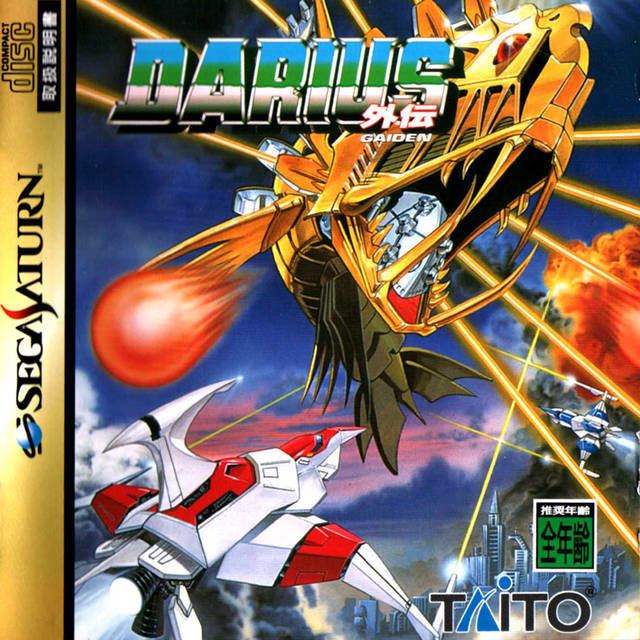 | ||||||||||||||||||||||||||||||||||
Designer(s) ListHisakazu KatoMasami KikuchiNaoto OmuraAkira KurabayashiYutaka NagayamaHidetaka HaradaRintaro DoiKatsumi KaneokaHisayoshi OguraKatsumi KaneokaKatsuhisa Ishikawa Programmer(s) Akira KurabayashiYutaka NagayamaNaoto OmuraHidetaka Harada Artist(s) Hirokazu KatoMasami KikuchiKentaro Matsumura Release date(s) September 19, 1994ArcadeJP: September 19, 1994NA: 1994Sega SaturnJP: December 15, 1995NA: 1996EU: 1996PlayStationJP: December 20, 1996PlayStation 2JP: July 28, 2005JP: July 6, 2006 (rerelease)Microsoft WindowsJP: November 1997EU: 1998JP: November 19, 1999NA: 1999JP: January 16, 2004JP: March 5, 2004 Similar Darius games, Taito games, Shoot 'em up games | ||||||||||||||||||||||||||||||||||
Darius gaiden arcade taito 1994 720p
Darius Gaiden (ダライアス外伝, Daraiasu Gaiden) (planned to be released as Darius III) is a shoot'em up arcade game, developed and released by Taito in 1994. It is the third arcade installment of the Darius series.
Contents
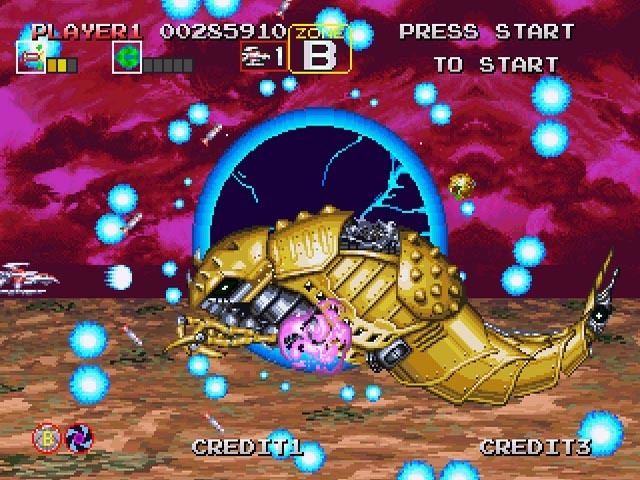
Gameplay
Darius Gaiden is a two-dimensional shoot'em up. The player controls a space ship named the Silver Hawk and must guide it through scrolling stages, destroying enemies and avoiding obstacles along the way. The ship is armed with forward-firing missiles, aerial bombs and a protective force-field, all of which can be upgraded by various power-ups that are dropped by specially-colored enemies when they are destroyed by the player. New to the Silver Hawk's arsenal in Darius Gaiden is the 'black hole bomb.' When fired, the black hole bomb will create a large vortex in the center of the screen, which sucks in enemies and projectiles on the screen for a short moment, until it explodes into a powerful ball of lightning that inflicts massive damage onto every enemy on the screen.
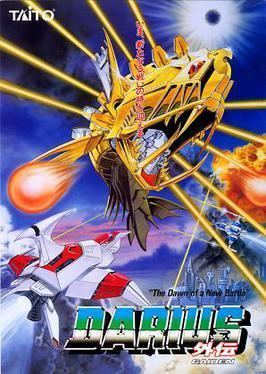
Another feature introduced in Darius Gaiden is the ability to capture minibosses, who appear in every stage. Each miniboss has a small, circular ball placed on them that, after receiving enough damage, will detach and float away, causing the miniboss to turn idle. If the player collects the ball, the miniboss will follow and aid the player. After a brief period of time, or the player loses a life, the miniboss will explode.
Plot
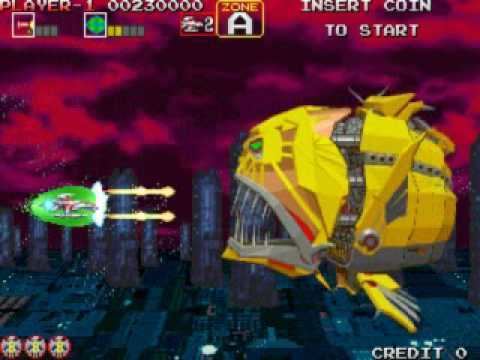
Shortly after the events of the first Darius, protagonists Proco and Tiat help refugees from the planet Darius flee from the destruction caused by the Belser Army. They eventually find and set up a temporary colony on a planet named Vadis. Suddenly, Belser rises again and launches a surprise attack on a spaceport on Darius, which was being used to help ferry the remaining Darians to Vadis. The remaining refugees are killed, and Belser sets course for Vadis. A fleet of Silver Hawks are sent to fend off Belser, but are easily annihilated. Once again, Proco and Tiat are given no choice but to fight off Belser once more.
Ports
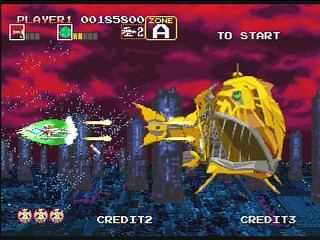
Darius Gaiden was ported to the Sega Saturn in 1995, to the PlayStation in 1996, and to Microsoft Windows in 1997-2004 (the game was ported to the PC by different companies). The Saturn and PC versions were released in Europe and North America by Acclaim and Interplay, respectively. In 2006 it saw re-release on the PlayStation 2, Xbox and PC as part of Taito Legends 2.
Reception
Darius Gaiden received generally positive reviews. Electronic Gaming Monthly gave the Saturn version a 7.375 out of 10. Though most of their four reviewers felt the game was too hard, they praised the music, the absence of slowdown, and most especially the striking graphics, and recommended the game to shooter fans as "one of the most intense [shooters] out there." GamePro's Air Hendrix complimented the controls, challenge, variety of enemies, menacing bosses, visuals, and soundtrack, while criticizing the lack of selectable weapons, slowdown during busy moments, and sound effects. He made particular note of the branching level layout, saying that it extends the longevity of the game to beyond that of a rental. Sega Saturn Magazine gave the Saturn version an 80%, praising the multiple difficulty modes, high challenge, graphics, and multiple paths through the game. Their sole complaint was with the music, describing it as "some fat bint warbling away like an Old Spice advert." In a 2014 retrospective, Eurogamer called the game "one of the most confident and accomplished sprite-based games ever imagined".
